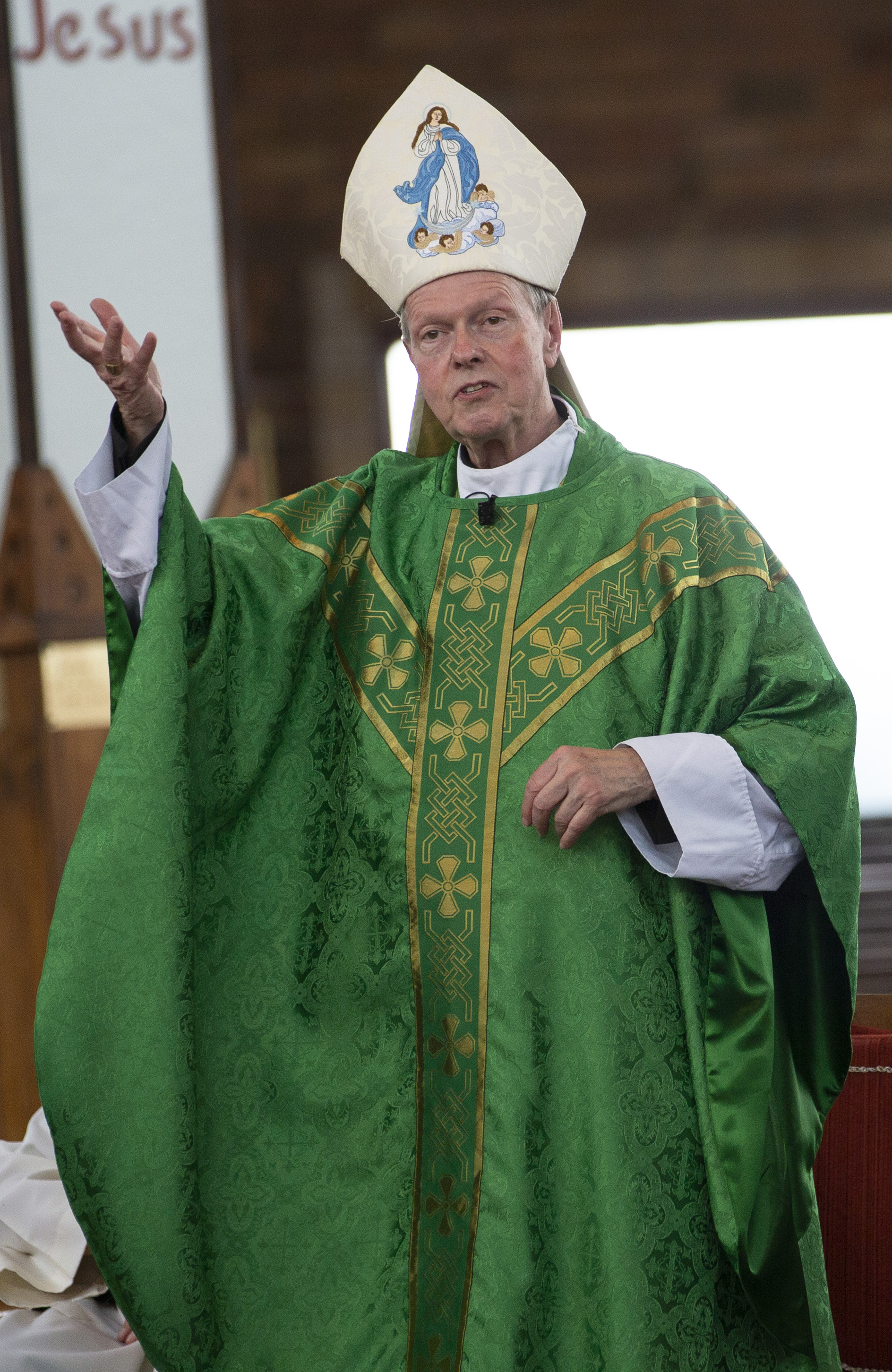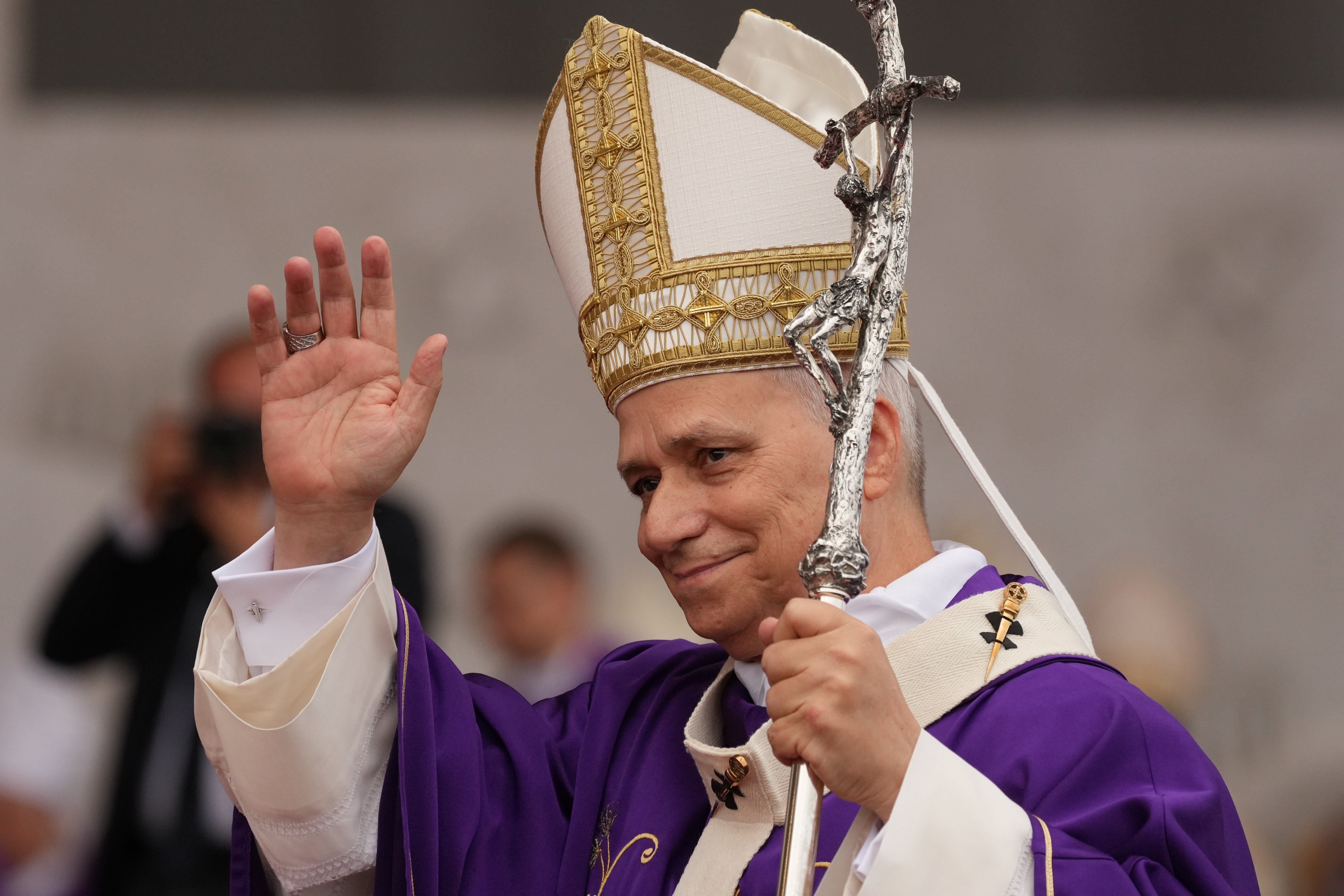December 20, 2023 at 7:00 a.m.
AN INVITATION TO LOVE
For Catholics, great feasts like Christmas don't come at us out of the blue: In the secular world, "Christmas" seems to start in October! However, our approach to this holiday as Catholics must be different, and it can be. We can put aside the worldly calendar; we can allow the ancient, rich tradition of the church to surround and center us instead. And then, we will be enriched by truly celebrating a Catholic Christmas.
Christmas, 2023
By Kathy Schongar
December breezes and bright lights
draped around palm trees and sturdy pines
draw our eyes skyward
to twinkling stars that light the night.
The vastness of Creation calls us
to view our Earth with gentle eyes,
to pause, to breathe in
the wisdom of the Spirit in our midst.
We circle the Sun yet again
seeking the Christmas Star
as did shepherds and kings a millennia ago.
From the heavens
are seen no lines drawn upon the planet,
no boundaries dividing humanity.
Candles flicker in windows
illuminating the darkness,
calling us into the light
that warms body and soul.
Pure Love given substance.
An innocent Child, both human and Divine,
born to teach us by example
how to use our gifts for good,
shattering walls, building bridges
that bring us together.
Emmanuel, God with us still,
as we add our notes of grateful praise
to the joyous Christmas melody echoing on through time and eternity …
Kathy Schongar is a parishioner at
St. Vincent De Paul parish in Albany.
"God's sign is simplicity. God's sign is the baby. God's sign is that he makes himself small for us. This is how he reigns. He does not come with power and outward splendor. He comes as a baby -- defenseless and in need of our help," Pope Benedict XVI preached in his homily for Midnight Mass in 2006. "He does not want to overwhelm us with his strength. He takes away our fear of his greatness. He asks for our love: So he makes himself a child."
A child is coming: As for any birth, we prepared. The Advent season was a gift, rich with opportunities to ready our lives for the embrace of our Savior. Even during our most hectic times, we "watched and waited" with the church. Everything else that we did during Advent echoed what we heard in God's Word and the church's prayer. Our Advent wreaths and Jesse Trees were physical reminders of the coming light and the prophecies fulfilled. When we celebrated the Sacrament of Reconciliation, we acknowledged our darkness and need, and rejoiced in the light of forgiveness offered through the Child.
Joining our thoughts and prayers to those of the communion of saints whose feasts occurred during this season -- Ambrose, Lucy, John of the Cross, Juan Diego Cuauhtlatoatzin, and others -- helped us hear John the Baptist's call along with these holy men, women and even children who have gone before us in faith. Just as they heard and responded, so can we.
During this season, we twice celebrated the Blessed Virgin Mary, whose openness to God models our own patient Advent waiting. On the solemnity of the Immaculate Conception (Dec. 8), we celebrated the truth that she was conceived without sin. On the feast of Our Lady of Guadalupe (Dec. 12), we celebrated Mary's appearance to the indigenous St. Juan Diego Cuauhtlatoatzin ("Talking Eagle") in Mexico in 1531.
St. Nicholas of Myra's feast Dec. 6 was celebrated in many European countries as a day to share gifts -- often candy, and often placed in shoes. As Europeans immigrated to the United States, various St. Nicholas traditions combined and emerged as Santa Claus. Sharing the story of the real St. Nicholas can help us emulate the generosity of his faith-filled life, which is in turn an expression of God's own generosity and the gift of Jesus.
When Christmas arrives, we have spent four weeks preparing for the Child. At last, the day to celebrate arrives: The Father has answered our prayers, sending his Son as one like ourselves, humbly immersing himself in human life and speaking words we can understand, inviting us to love.
At Christmas, we celebrate God's gift of Jesus to the world. The very name of the day and the season -- "Christ's Mass," derived from the Old English way of speaking of it -- places Jesus, present to us in the Eucharist, at the center of the day. Might this Christmas be the beginning of a closer friendship with Jesus, nurtured by the Eucharist?
There are actually four different Masses for Christmas: the Vigil, Midnight Mass, Mass at Dawn and Mass During the Day. Each has a distinct theme and different readings, reflecting the richness of the mystery of the Incarnation. Even though most of us will attend only one Mass at Christmas, it's a beautiful custom -- and well worth our while -- to meditate on the Mass readings from the others as well. This can deepen our appreciation for what God has done for us and the whole world in Christ.
Christmas is rich with symbols. We put up Christmas trees, Nativity sets and lights, all beautiful in their own right -- and all symbolic of the deeper, richer dimensions of meaning that our faith brings to this season.
Christmas trees, being evergreens, speak to us of God's eternal life and love, embodied in Christ. They also recall the tree in the garden through which sin came into the world, and the tree of the crucifixion by which that sin was conquered. Saying a prayer as we put up our tree, and making sure that some of our ornaments evoke the Nativity, can help bring this "home" to us.
The Nativity scene, or crèche ("crib" in French), was popularized by St. Francis of Assisi in the 13th century out of a desire to bring home the reality of the humility and love of Christ. Setting out the Nativity scene -- saving the Child for Dec. 25 and the Magi for Epiphany -- can be natural moments for prayer and reflection.
God gives the world his Son, who dwells among us, filling us with a love that must be shared. So we, on Christmas, give gifts. Contemplating the examples of gift-givers like the Magi, St. Nicholas and King Wenceslas can bring a new perspective to our own actions. Who is in greatest need, and what gifts can we give?
Many families have already discovered the joy of giving of themselves to others on Christmas Day: seeking out shut-ins, visiting residents of nursing homes or hospital patients, or serving the poor and the homeless. They reach out, as God reaches out to us in Christ. We can consider other alternatives as well: supporting charities in the name of our friends, or encouraging our families to center their gift-giving energies on those less fortunate in order to give as Christ has given to us.
We know as Catholics that Christmas isn't over Dec. 26. Even just those first few days after Christmas invite us to continue to open our hearts to the Christ Child and what he brings: There's the challenge of discipleship (St. Stephen Dec. 26), the beauty of the Word Made Flesh (St. John the Evangelist, Dec. 27), the reality of opposition to Christ (the Holy Innocents Dec. 28) and the blessing of family (Holy Family, the Sunday after Christmas).
Jan. 1 is the beginning of a new calendar year, but that's not the reason we celebrate it as a feast. On the Roman calendar, New Year's Day is both the Solemnity of Mary, Mother of God, and a day of prayer for peace. We make all sorts of resolutions for a new year, but alongside those efforts, we say a different sort of prayer. God has come to us, not in overwhelming power, but in humility as a child. So, on this day, we pray that the new year might be marked by humility and peace, brought by Christ and modeled by Mary.
The Solemnity of the Epiphany, traditionally observed Jan. 6 (the day following the familiar "Twelve Days of Christmas"), is transferred to a Sunday in the United States. "Epiphany" means "manifestation," and it's the celebration of Jesus manifesting his glory as Savior to all nations of the world (symbolized by the Magi).
Epiphany is a gift-giving day in some cultures, as well as a day to ask for God's blessings on our homes. One particular blessing includes bracketing the initials of the traditional names of the Magi who visited the home of Jesus -- Caspar, Melchior, and Balthazar -- with the year above the front entry door, usually in chalk, like this for 2023: 20+C+M+B+23.
In the scope of the universal Church, past and present, the Christmas season actually has two endings:
In the old Roman calendar, the feast of the Presentation on Feb. 2 marked the end of the Christmas season. On this day, also called Candlemas, candles are blessed as a symbol of Simeon's recognition of the infant Jesus as the light to the Gentiles, and as a way to bring the light of Christ home to burn all year. Even today, the Christmas tree and crèche in St. Peter's Square in Rome remain on display until Candlemas.
Likewise, the Baptism of the Lord, celebrated the Sunday after Epiphany, commemorates the final "Christmas" feast of our present Roman calendar. As we hear the Scriptural account of the Father revealing the divinity of Jesus at his baptism in the Jordan River, we celebrate our own baptism, our "new birth" in Christ and inclusion in his body, the church.
For Catholics, Dec. 25 is only the beginning of the celebration of Christmas. As others pack away the decorations, we continue to celebrate the gift of Christ, ever present for us in the Eucharist -- a continual manifestation of God's loving care for us all year long.
Amy Welborn is a freelance writer living in Birmingham, Alabama. She is the author of many books on faith and spirituality for children, teens and adults. Her website is AmyWelborn.com.
- New year marks time to usher in era of peace, friendship among all people, pope says
- Tragic New Year fire in a ski resort bar kills ‘several dozen’ in Switzerland
- ‘Hope does not disappoint:’ A Jubilee for the history books
- God’s plan of salvation greater than today’s ‘weaponized strategies,’ pope says
- Take time to review the past year with God, Pope Leo suggests
- Missionary on the move: Where Pope Leo XIV might travel next in 2026
- Dispensation in Columbus Diocese for those who fear immigration crackdown pursuit
- Puerto Rico Catholic governor signs historic personhood law for the unborn
- Wisconsin man’s Catholic faith revived after finding bishop’s crosier in scrapyard
- ‘Knives Out’ discovers the strange, attractive light of the Christian story








Comments:
You must login to comment.